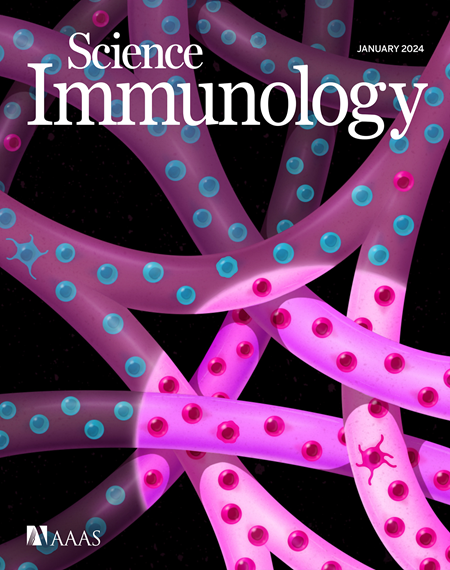The meninges host a distinct compartment of regulatory T cells that preserves brain homeostasis
IF 17.6
1区 医学
Q1 IMMUNOLOGY
引用次数: 0
Abstract
Our understanding of the meningeal immune system has recently burgeoned, particularly regarding how innate and adaptive effector cells are mobilized to meet brain challenges. However, information on how meningeal immunocytes guard brain homeostasis in healthy individuals remains limited. This study highlights the heterogeneous, polyfunctional regulatory T cell (Treg) compartment in the meninges. A Treg subtype specialized in controlling interferon-γ (IFN-γ) responses and another dedicated to regulating follicular B cell responses were substantial components of this compartment. Accordingly, punctual Treg ablation rapidly unleashed IFN-γ production by meningeal lymphocytes, unlocked access to the brain parenchyma, and altered meningeal B cell profiles. Distally, the hippocampus assumed a reactive state, with morphological and transcriptional changes in multiple glial cell types. Within the dentate gyrus, neural stem cells underwent more death and were blocked from further differentiation, which coincided with impairments in short-term spatial-reference memory. Thus, meningeal Tregs are a multifaceted safeguard of brain homeostasis at steady state.

求助全文
约1分钟内获得全文
求助全文
来源期刊

Science Immunology
Immunology and Microbiology-Immunology
CiteScore
32.90
自引率
2.00%
发文量
183
期刊介绍:
Science Immunology is a peer-reviewed journal that publishes original research articles in the field of immunology. The journal encourages the submission of research findings from all areas of immunology, including studies on innate and adaptive immunity, immune cell development and differentiation, immunogenomics, systems immunology, structural immunology, antigen presentation, immunometabolism, and mucosal immunology. Additionally, the journal covers research on immune contributions to health and disease, such as host defense, inflammation, cancer immunology, autoimmunity, allergy, transplantation, and immunodeficiency. Science Immunology maintains the same high-quality standard as other journals in the Science family and aims to facilitate understanding of the immune system by showcasing innovative advances in immunology research from all organisms and model systems, including humans.
 求助内容:
求助内容: 应助结果提醒方式:
应助结果提醒方式:


